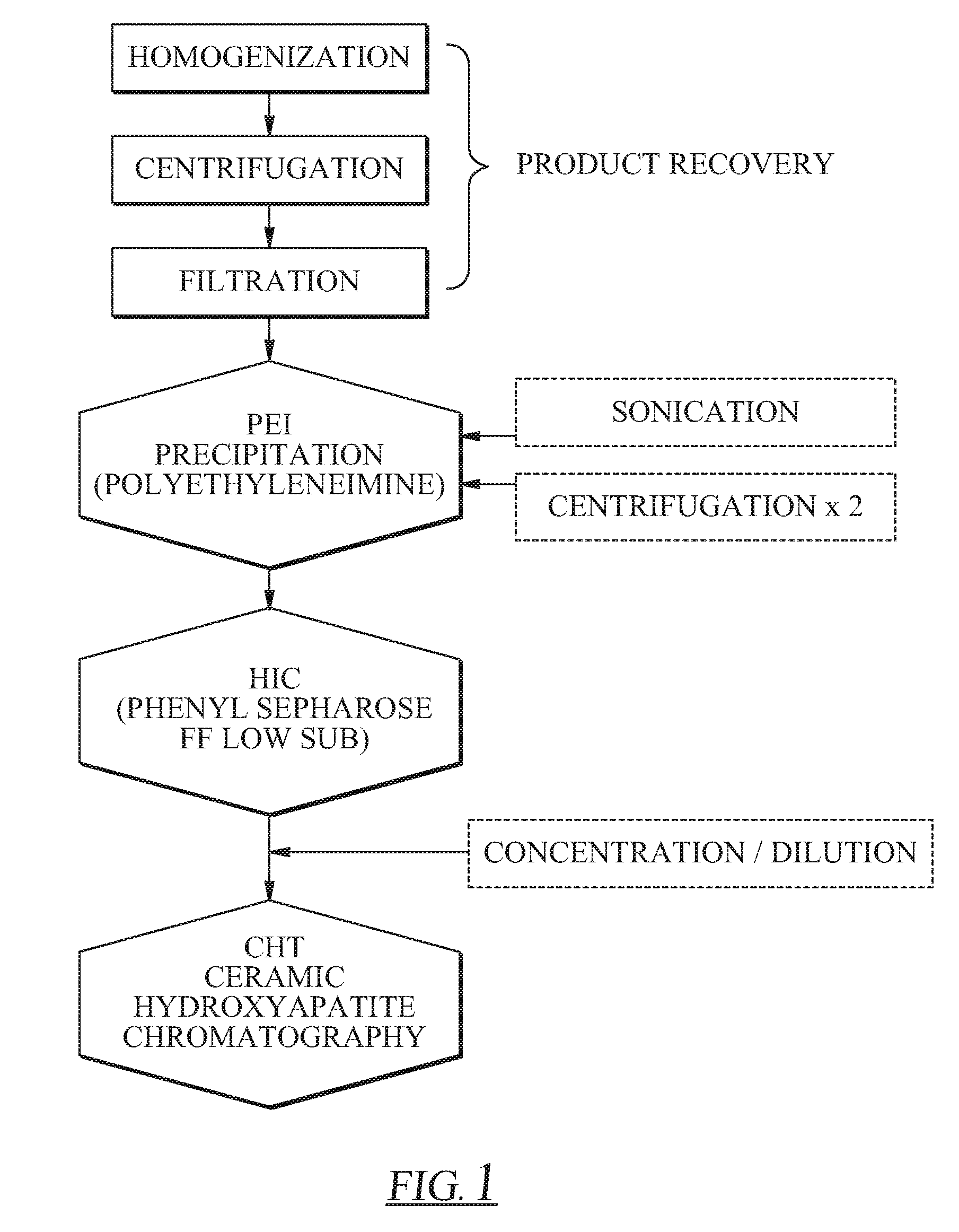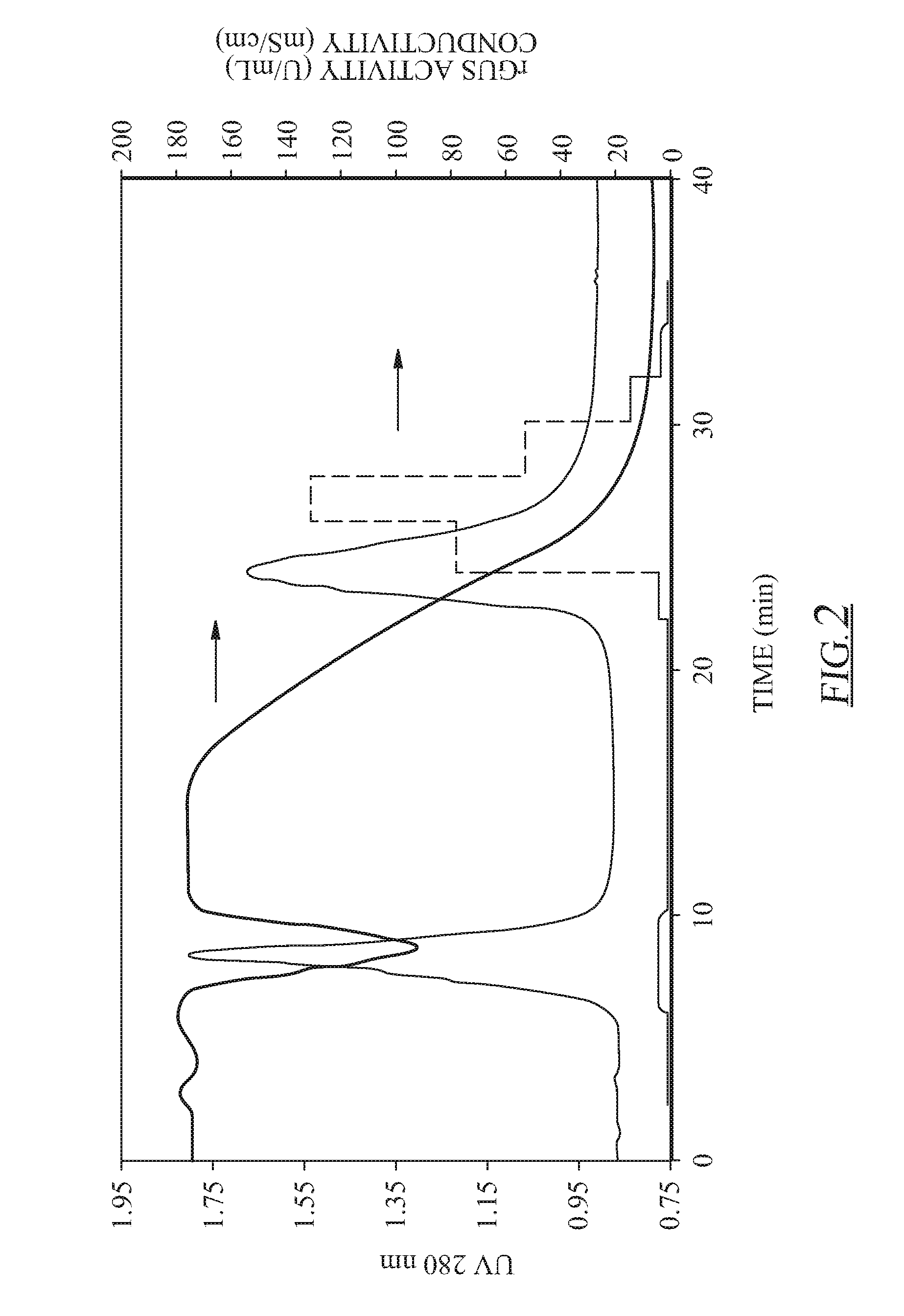Method of purifying acidic proteins expressed in plants
a technology of acidic proteins and plants, applied in the field of molecular biology and protein biochemistry, can solve the problems of difficult purification of acidic recombinant proteins from tobacco, and phenolic presence in tobacco extracts, etc., to achieve efficient purification of proteins and enhance the ability to produce and purify proteins.
- Summary
- Abstract
- Description
- Claims
- Application Information
AI Technical Summary
Benefits of technology
Problems solved by technology
Method used
Image
Examples
example 1
Protein Extraction From Transgenic Ttobacco
[0036]The product recovery step is one of the most important steps in downstream processing as it will dictate how much initial protein is present for purification. The aim of the recovery step is to maximize target protein extraction into an aqueous medium while minimizing protein degradation. For many studies, an extract can be obtained by grinding frozen leaf tissue under liquid nitrogen followed by addition of an appropriate extraction buffer. However, this process is not feasible for large-scale extraction on large amounts of tobacco leaf biomass. Therefore, in the method of this embodiment of the invention, extraction was accomplished by homogenization, which sheared the leaf tissue in an aqueous buffer. During this stage, there are several important factors to consider for minimizing protein degradation. First, 10 mM BME was added to the buffer prior to homogenization to keep the environment in a reduced state, preventing harmful oxi...
example 2
PEI Precipitation
[0038]After a transgenic tobacco extract was obtained, the first main step in the purification process was polyelectrolyte precipitation. Polyethyleneimine was added at a dosage of 800 mg PEI per gram total protein to ensure near complete precipitation of rGUS and maximum recovery in the pellet fraction, as reported previously (Holler et al., 2007). While a dosage of 800 mg PEI per gram total protein results in near complete precipitation of rGUS, a number of other native tobacco proteins co-precipitate, most notably the acidic chloroplast storage protein, ribulose 1,5-bisphosphate carboxylase-oxygenase (Rubisco). Increasing the PEI dosage effectively increases the amount of Rubisco co-precipitated with rGUS, leading to modest enrichment values (Holler et al., 2007). Previously it was reported that sonication and subsequent centrifugation of the pellet was necessary after the addition of resuspension buffer to adequately recover rGUS from the precipitated pellet (Ho...
example 3
HIC Optimization
[0040]Hydrophobic interaction chromatography (HIC) was carried out as the second main step in the purification scheme. After PEI precipitation, the sample (1.5 mL) was applied directly to the HIC column with no additional salt added. The sample was loaded onto the column followed by an additional 2 mL of equilibration buffer (A1) on top of the sample, which ensured sufficient salt for binding. Our previous results suggest that an HIC step after PEI precipitation could not efficiently separate rGUS from many native tobacco proteins (e.g., Rubisco), leading to an enrichment ratio of approximately 6.55 with only 53.5% recovery (Holler et al., 2007). Several other HIC resins were investigated, including Phenyl Sepharose FF (high substitution), Octyl Sepharose FF, and Butyl Sepharose FF, but separation was not achieved and recoveries were often lower than with Phenyl Sepharose FF (low substitution) (data not shown). Therefore, it was concluded that HIC chromatography woul...
PUM
| Property | Measurement | Unit |
|---|---|---|
| Hydrophobicity | aaaaa | aaaaa |
Abstract
Description
Claims
Application Information
 Login to View More
Login to View More - R&D
- Intellectual Property
- Life Sciences
- Materials
- Tech Scout
- Unparalleled Data Quality
- Higher Quality Content
- 60% Fewer Hallucinations
Browse by: Latest US Patents, China's latest patents, Technical Efficacy Thesaurus, Application Domain, Technology Topic, Popular Technical Reports.
© 2025 PatSnap. All rights reserved.Legal|Privacy policy|Modern Slavery Act Transparency Statement|Sitemap|About US| Contact US: help@patsnap.com



